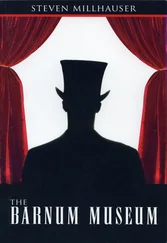The Look
Most of us are familiar with the look they cast in our direction before they withdraw. The look has been variously described as proud, hostile, suspicious, mocking, disdainful, uncertain; never is it seen as welcoming. Some witnesses say that the phantoms show slight movements in our direction, before the decisive turning away. Others, disputing such claims, argue that we cannot bear to imagine their rejection of us and misread their movements in a way flattering to our self-esteem.
Highly Questionable
Now and then we hear reports of a more questionable kind. The phantoms, we are told, have grayish wings folded along their backs; the phantoms have swirling smoke for eyes; at the ends of their feet, claws curl against the grass. Such descriptions, though rare, are persistent, perhaps inevitable, and impossible to refute. They strike most of us as childish and irresponsible, the results of careless observation, hasty inference, and heightened imagination corrupted by conventional images drawn from movies and television. Whenever we hear such descriptions, we’re quick to question them and to make the case for the accumulated evidence of trustworthy witnesses. A paradoxical effect of our vigilance is that the phantoms, rescued from the fantastic, for a moment seem to us normal, commonplace, as familiar as squirrels or dandelions.
Case Study #2
Years ago, as a child of eight or nine, Karen Carsten experienced a single encounter. Her memory of the moment is both vivid and vague: she can’t recall how many of them there were, or exactly what they looked like, but she recalls the precise moment at which she came upon them, one summer afternoon, as she stepped around to the back of the garage in search of a soccer ball and saw them sitting quietly in the grass. She still remembers her feeling of wonder as they turned to look at her, before they rose and went away. Now, at age fifty-six, Karen Carsten lives alone with her cat in a house filled with framed photographs of her parents, her nieces, and her late husband, who died in a car accident seventeen years ago. Karen is a high school librarian with many set routines: the TV programs, the weekend housecleaning, the twice-yearly visits in August and December to her sister’s family in Youngstown, Ohio, the choir on Sunday, dinner every two weeks at the same restaurant with a friend who never calls to ask how she is. One Saturday afternoon she finishes organizing the linen closet on the second floor and starts up the attic stairs. She plans to sort through boxes of old clothes, some of which she’ll give to Goodwill and some of which she’ll save for her nieces, who will think of the collared blouses and floral-print dresses as hopelessly old-fashioned but who might come around to appreciating them someday, maybe. As she reaches the top of the stairs she stops so suddenly and completely that she has the sense of her own body as an object standing in her path. Ten feet away, two children are seated on the old couch near the dollhouse. A third child is sitting in the armchair with the loose leg. In the brownish light of the attic, with its one small window, she can see them clearly: two barefoot girls of about ten, in jeans and T-shirts, and a boy, slightly older, maybe twelve, blond-haired, in a dress shirt and khakis, who sits low in the chair with his neck bent up against the back. The three turn to look at her and at once rise and walk into the darker part of the attic, where they are no longer visible. Karen stands motionless at the top of the stairs, her hand clutching the rail. Her lips are dry and she is filled with an excitement so intense that she thinks she might burst into tears. She does not follow the children into the shadows, partly because she doesn’t want to upset them, and partly because she knows they are no longer there. She turns and walks back down the stairs. In the living room she sits in the armchair until nightfall. Joy fills her heart. She can feel it shining from her face. That night she returns to the attic, straightens the pillows on the couch, smooths out the doilies on the chair arms, brings over a small wicker table, sets out three saucers and three teacups. She moves away some bulging boxes that sit beside the couch, carries off an old typewriter, sweeps the floor. Downstairs in the living room she turns on the TV, but she keeps the volume low; she’s listening for sounds in the attic, even though she knows that her visitors don’t make sounds. She imagines them up there, sitting silently together, enjoying the table, the teacups, and the orderly surroundings. Now each day she climbs the stairs to the attic, where she sees the empty couch, the empty chair, the wicker table with the three teacups. Despite the pang of disappointment, she is happy. She is happy because she knows they come to visit her every day, she knows they like to be up there, sitting in the old furniture, around the wicker table; she knows; she knows.
Explanation #2
One explanation is that the phantoms are not there , that those of us who see them are experiencing delusions or hallucinations brought about by beliefs instilled in us as young children. A small movement, an unexpected sound, is immediately converted into a visual presenee that exists only in the mind of the perceiver. The flaws in this explanation are threefold. First, it assumes that the population of an entire town will interpret ambiguous signs in precisely the same way. Second, it ignores the fact that most of us, as we grow to adulthood, discard the stories and false beliefs of childhood but continue to see the phantoms. Third, it fails to account for innumerable instances in which multiple witnesses have seen the same phantom. Even if we were to agree that these objections are not decisive and that our phantoms are in fact not there, the explanation would tell us only that we are mad, without revealing the meaning of our madness.
Our Children
What shall we say to our children? If, like most parents in our town, we decide to tell them at an early age about the phantoms, we worry that we have filled their nights with terror or perhaps have created in them a hope, a longing, for an encounter that might never take place. Those of us who conceal the existence of phantoms are no less worried, for we fear either that our children will be informed unreliably by other children or that they will be dangerously unprepared for an encounter should one occur. Even those of us who have prepared our children are worried about the first encounter, which sometimes disturbs a child in ways that some of us remember only too well. Although we assure our children that there’s nothing to fear from the phantoms, who wish only to be left alone, we ourselves are fearful: we wonder whether the phantoms are as harmless as we say they are, we wonder whether they behave differently in the presence of an unaccompanied child, we wonder whether, under certain circumstances, they might become bolder than we know. Some say that a phantom, encountering an adult and a child, will look only at the child, will let its gaze linger in a way that never happens with an adult. When we put our children to sleep, leaning close to them and answering their questions about phantoms in gentle, soothing tones, until their eyes close in peace, we understand that we have been preparing in ourselves an anxiety that will grow stronger and more aggressive as the night advances.
Crossing Over
The question of “crossing over” refuses to disappear, despite a history of testimony that many of us feel ought to put it to rest. By “crossing over” we mean, in general, any form of intermingling between us and them; specifically, it refers to supposed instances in which one of them, or one of us, leaves the native community and joins the other. Now, not only is there no evidence of any such regrouping, of any such transference of loyalty, but the overwhelming testimony of witnesses shows that no phantom has ever remained for more than a few moments in the presence of an outsider or given any sign whatever of greeting or encouragement. Claims to the contrary have always been suspect: the insistence of an alcoholic husband that he saw his wife in bed with one of them , the assertion of a teenager suspended from high school that a group of phantoms had threatened to harm him if he failed to obey their commands. Apart from statements that purport to be factual, fantasies of crossing over persist in the form of phantom-tales that flourish among our children and are half-believed by naïve adults. It is not difficult to make the case that stories of this kind reveal a secret desire for contact, though no reliable record of contact exists. Those of us who try to maintain a strict objectivity in such matters are forced to admit that a crossing of the line isn’t impossible, however unlikely, so that even as we challenge dubious claims and smile at fairy tales we find ourselves imagining the sudden encounter at night, the heads turning toward us, the moment of hesitation, the arms rising gravely in welcome.
Читать дальше












